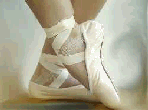Women and Intellectual Property
|
|
|
Introduction
This web page is intended primarily to provide information about intellectual property issues and WIPO activities that may be of particular interest and concern to women. It also hopes to serve as a link to other related web sites and to facilitate networking among women in the intellectual property field. Finally, this web page pays tribute, at least in a representative capacity, to some of the many women around the world, frequently "unsung heroes", of all nationalities, races, religions, ages and social backgrounds, who have, are, and hopefully increasingly will continue to make significant contributions in the intellectual property field.
Although traditionally women have not generally held major prominence in the intellectual property field, an area frequently seen as a "masculine" activity in years past, this has sometimes been more a matter of perception than of reality. Moreover, in recent times, the intellectual property field, as every aspect of human endeavor, has witnessed significant strides being made by women towards achieving equality, both in terms of opportunities and of recognition.
One very visible sign of progress is the increasing number of women acceding to high-level positions in intellectual property administrations, within both the public and private sectors, and at the national, regional and international levels. This development is reflected in the growing number of women representatives who participate in WIPO meetings and other events as well as in the high proportion of women who benefit from the various WIPO training and other educational programs.
Women have long been known to have made important contributions in the visual and performing arts, in music and in literature, even if they may not have always received the recognition they deserved. Around the world, in indigenous, nomadic and agricultural communities, it is frequently women who have been and continue to be entrusted with safeguarding and transmitting traditional knowledge and folklore. It is important that these contributions be recognized and protected where appropriate.
The only person to have ever been awarded two Nobel prizes, each in a different science (physics and chemistry), Marie Curie, may have stood out as a "lonely" pioneer in her times. She nonetheless inspired millions of future women (and also male) scientists around the world. Today, Marie Curie would have been pleased to find herself in the good company of so many women scientists. Although women inventors overall still constitute a minority (the patent field being the only intellectual property area where gender desegregated statistics can be compiled because the Paris Convention requires that inventors be named as such in the patent document), this minority is slowly growing into a "critical" mass and expanding into all fields of science and technology. This is reflected not only in the growing number of women whose inventions are being patented but also in the scope of their scientific and technological activities. Whereas women first ventured mainly into "feminine" oriented endeavors, involving home and family related inventions, such as toys and disposable diapers, frequently in an effort to find practical solutions to their every-day challenges as housewives and mothers, today women are making important contributions as professional research scientists in all aspects of mainstream and forefront sciences, from biology and medicine to genetic engineering and "high-tech". It is important that these contributions be acknowledged and that the prototype of an inventor as a "man" be discarded, so that girls and young women can look into the future with confidence that all fields of science and technology are open to them, with equal opportunities offered to women and men to make contributions to the betterment of mankind. Why deprive humanity of the potential contributions that women could make?
In country after country, statistics show that even during these past years of economic crisis and recession, the one robust sector providing economic growth, increased productivity and employment has been that of small and medium-sized enterprises. What is less known is that in many countries up to 40% to 50% of such enterprises are owned and run by women - women who are actual or potential owners of trademarks, service marks, trade names as well as of industrial designs, patents and copyright. It is critical that outreach programs to build awareness about the importance of intellectual property and its protection target these women and also the many other women running the majority of micro enterprises and many cooperatives, especially in developing countries. Women, just as men, deserve to be given the means to enable them to use intellectual property as a tool of economic and social empowerment.
Today, women constitute about 55% of the world's population. If one of the great achievements of the 20th century was that women gained access to all fields of economic, commercial and intellectual activity, one of the major challenges of the 21st century is to ensure that women gain equal opportunities of access, advancement and recognition. As a United Nations specialized agency, WIPO is committed to these goals.
This site last updated in October 2006








